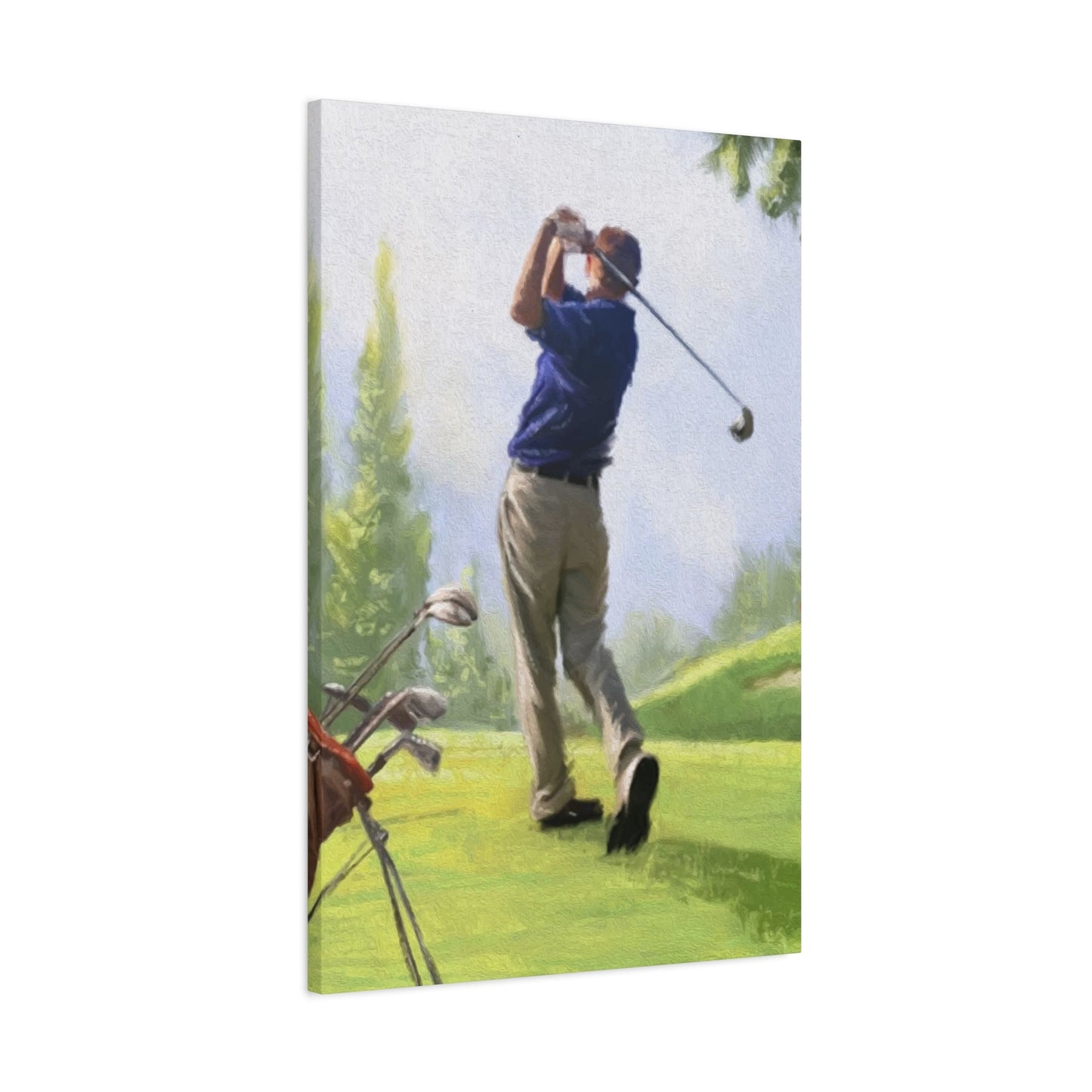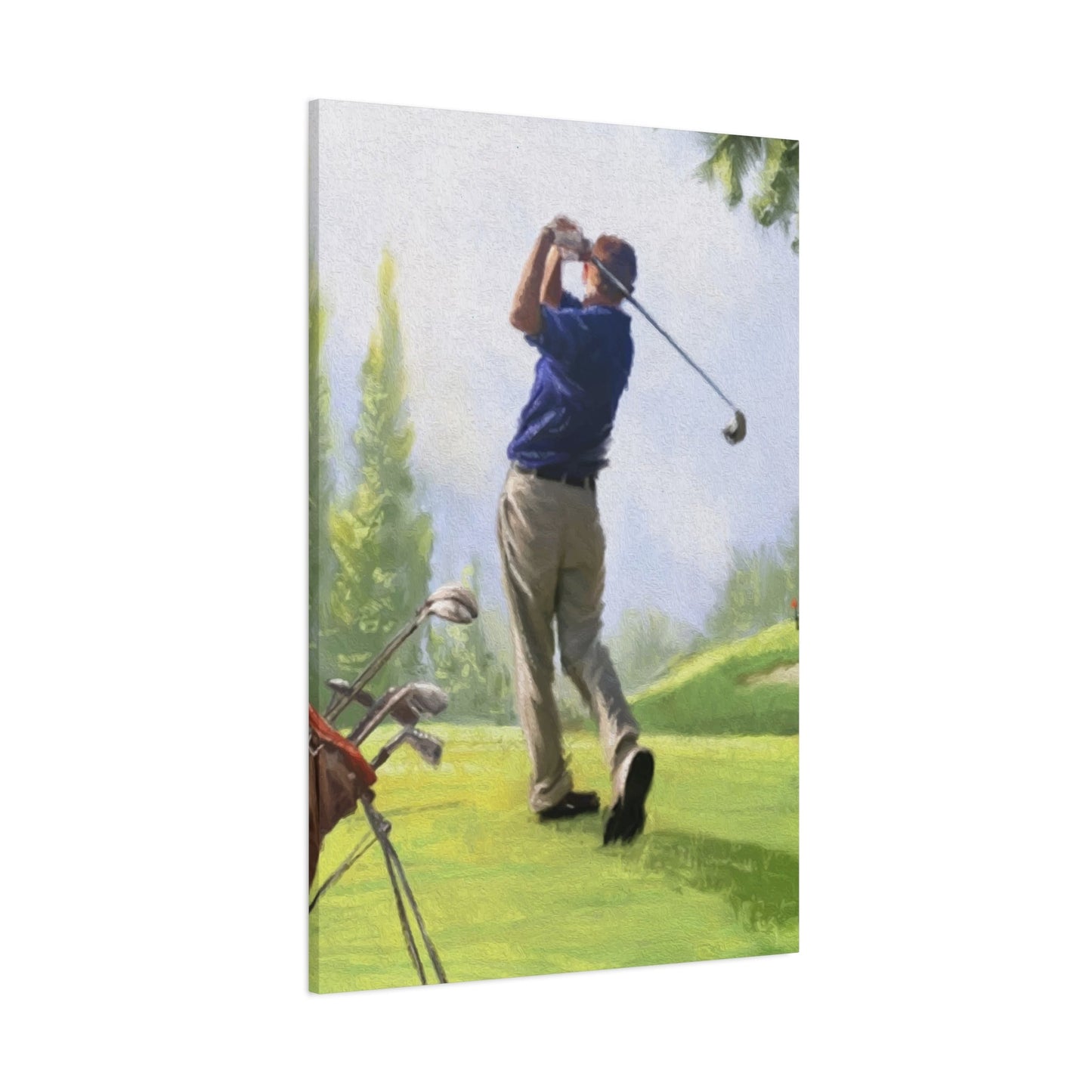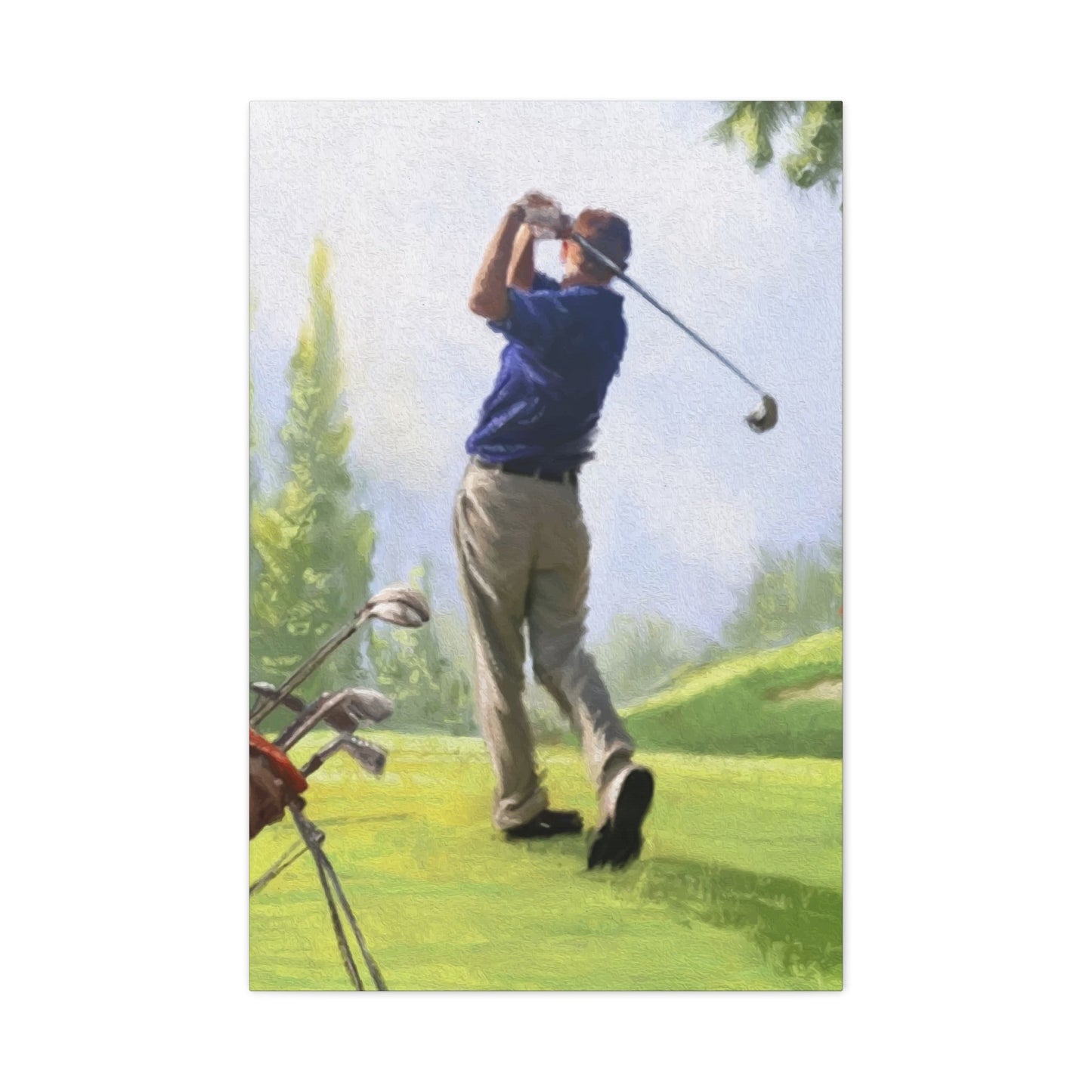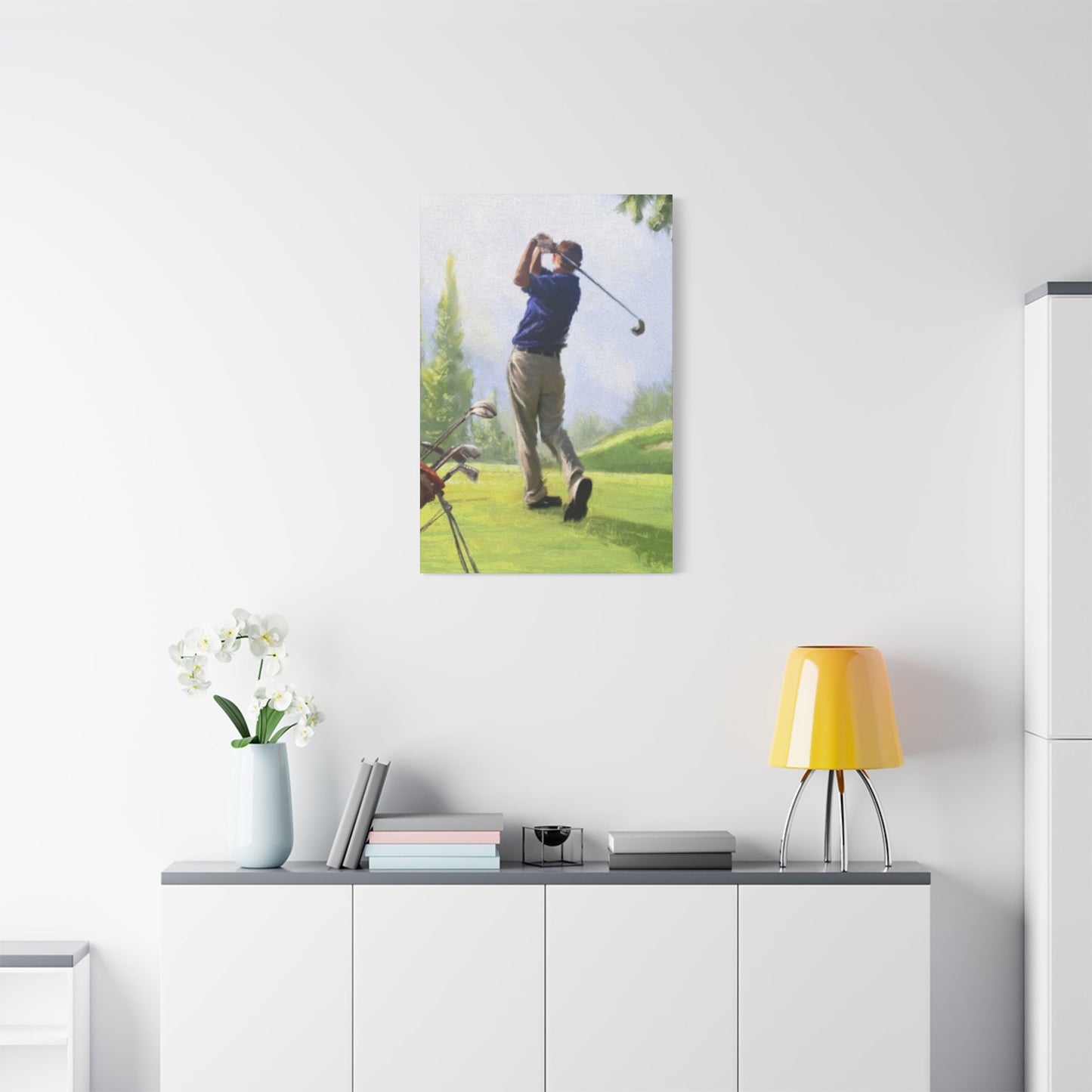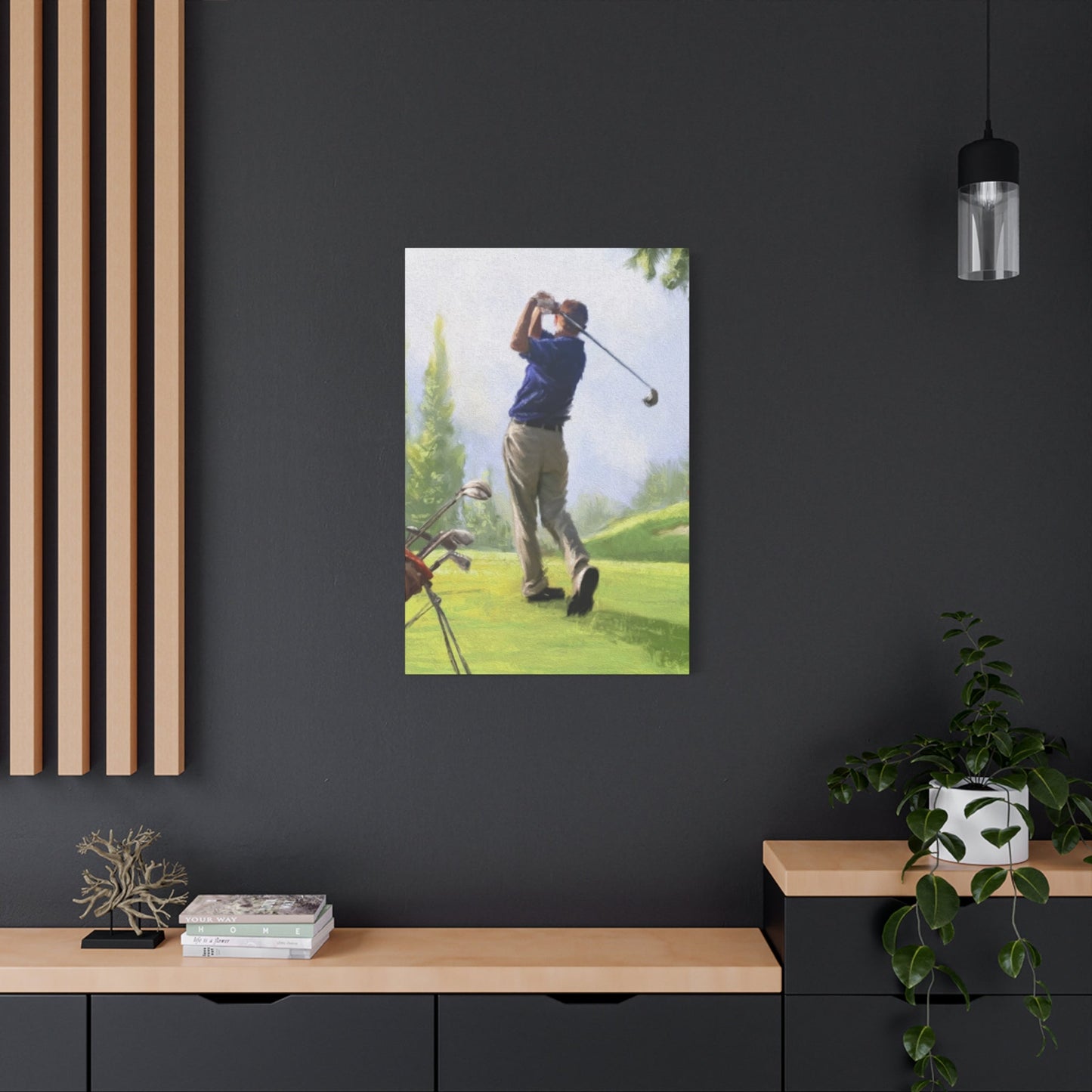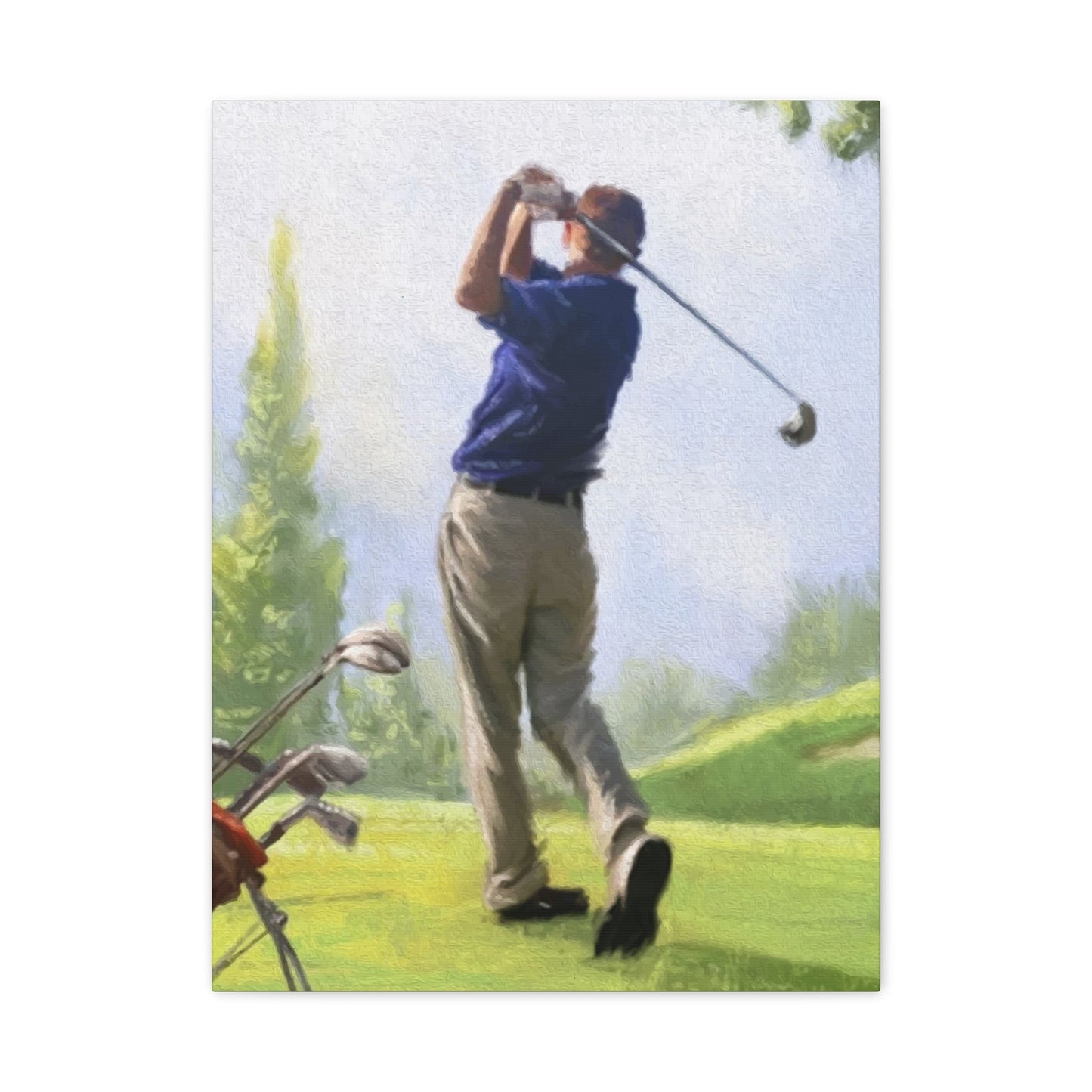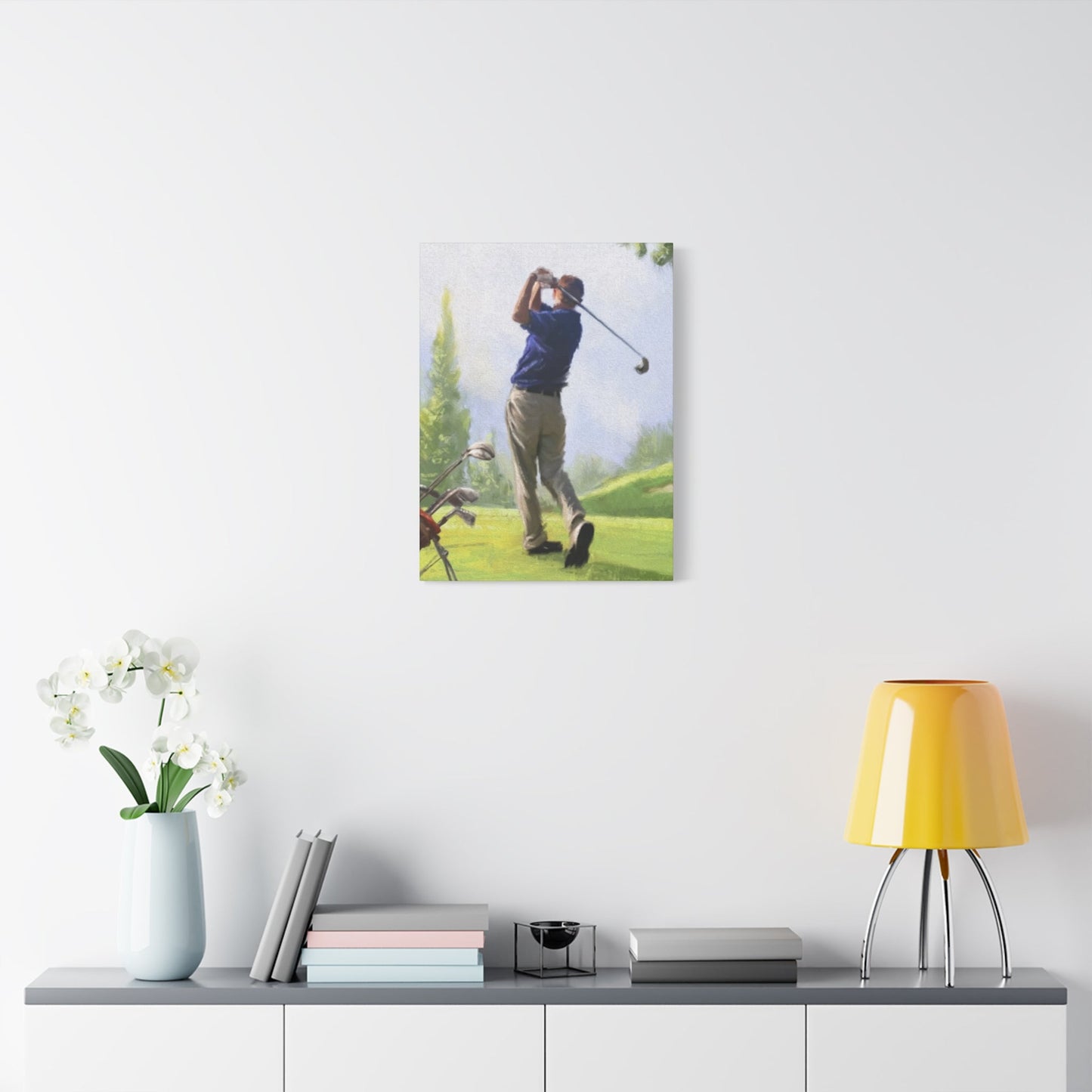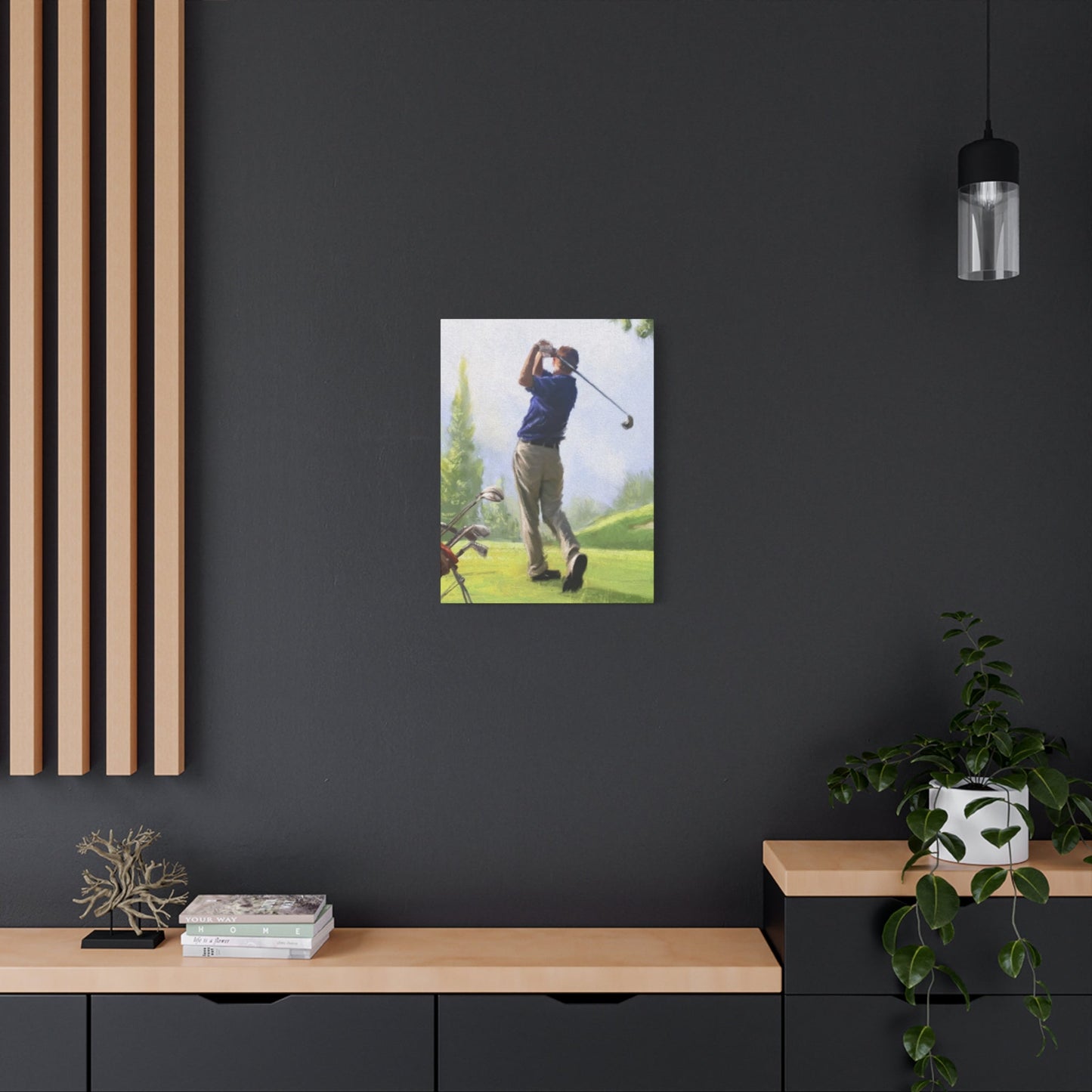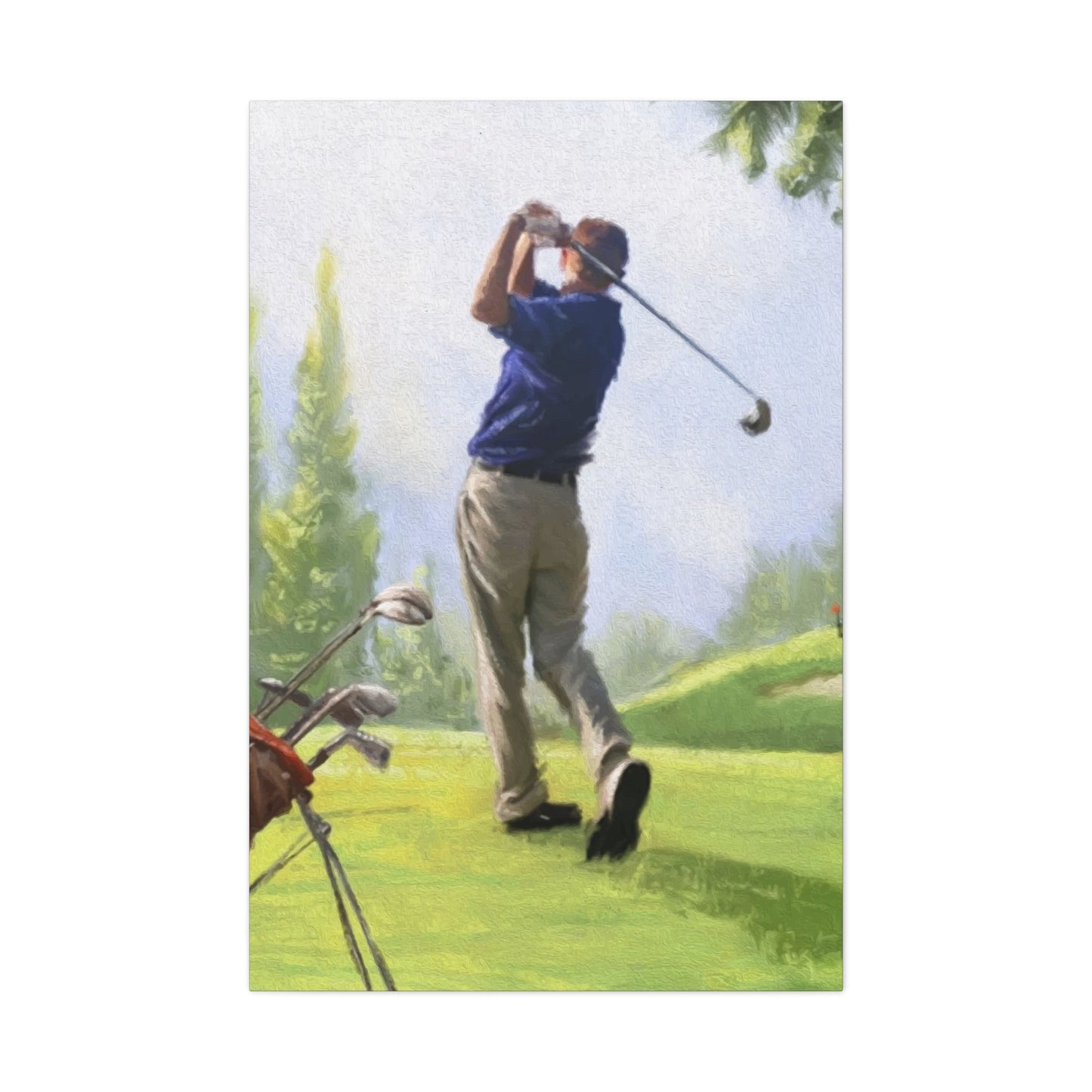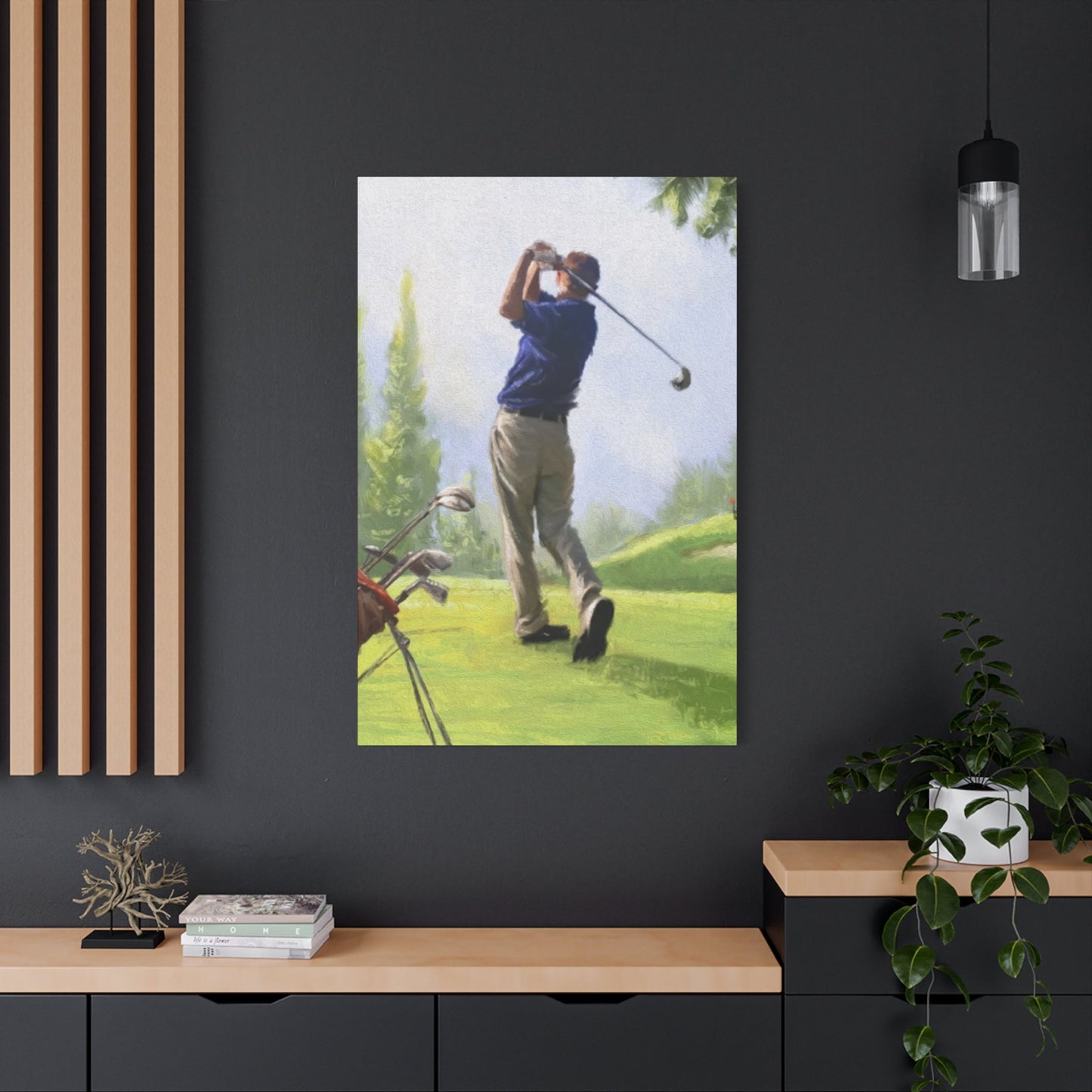Complete Guide to Golfer Wall Art: Elevating Your Living Areas with Sporting Elegance
Golf represents more than just a game; it embodies tradition, precision, and timeless elegance. When you bring golf-themed artwork into your home or office, you're not merely decorating walls – you're creating an atmosphere that celebrates the sport's rich heritage and sophisticated appeal. This comprehensive exploration delves into every aspect of incorporating golf-themed visual elements into your living environments, from selecting the perfect pieces to creating cohesive themes that reflect your passion for the game.
The world of golf-inspired artwork offers endless possibilities for enhancing your surroundings. Whether you're a seasoned player who spends weekends perfecting your swing or someone who appreciates the aesthetic beauty of the sport, there's a perfect artistic expression waiting to complement your lifestyle. From classic course landscapes to contemporary abstract interpretations, golf artwork spans numerous styles and approaches, each offering unique ways to personalize your environment.
Creating a golf-themed atmosphere goes beyond simply hanging a few pictures on walls. It involves thoughtful consideration of color schemes, artistic styles, room functions, and personal preferences. The key lies in understanding how different types of golf artwork can work together to create a cohesive and inspiring environment that reflects your personality while honoring the sport's timeless appeal.
Designing Your Perfect Golf Sanctuary
Creating a golf-dedicated room represents the ultimate expression of your passion for the sport. This specialized environment serves multiple purposes: it's a retreat where you can unwind after a challenging round, a place to practice your putting, and a showcase for your golf-related memories and achievements. The artwork you choose for this sanctuary should reflect not only your love for the game but also create an atmosphere that inspires and motivates your continued improvement.
When planning your golf room's artistic elements, consider the room's primary functions. Will this be a quiet retreat for reading golf magazines and watching tournaments? Perhaps it's a social area where you'll entertain fellow golfers and share stories of memorable rounds? Or maybe it's a practice room where you'll work on your short game? Each function suggests different artistic approaches and placement strategies that can enhance the room's effectiveness and appeal.
The color palette of your golf room artwork should harmonize with the natural colors associated with the sport. Think beyond the obvious greens of fairways and consider the warm earth tones of sand traps, the crisp whites of golf balls and clothing, and the rich browns of leather golf bags and wooden clubheads. These colors can be incorporated through various artistic styles, from realistic landscape paintings to abstract interpretations that capture the essence of the game.
Lighting plays a crucial role in showcasing your golf artwork effectively. Natural light can bring landscape paintings to life, making course scenes appear more vivid and inviting. However, consider how the light changes throughout the day and season, and supplement with carefully positioned artificial lighting to ensure your artwork is always displayed to its best advantage. Track lighting or individual picture lights can create dramatic effects while protecting valuable pieces from harmful UV rays.
The scale and proportion of artwork in your golf room should complement the room's dimensions and furniture. Large-scale pieces can serve as dramatic focal points, while smaller works can be grouped to create interesting galleries or collections. Consider mixing different sizes and formats – perhaps a large course landscape as the centerpiece, surrounded by smaller action shots or vintage poster reproductions that tell the story of golf's evolution.
Storage and display solutions should be integrated into your room design. Golf equipment can become part of the artistic display when properly arranged and lit. Vintage clubs, historic golf balls, and tournament trophies can complement traditional artwork while adding three-dimensional interest to your golf sanctuary. Custom shelving and display cases can protect valuable memorabilia while making it an integral part of your room's aesthetic appeal.
Iconic Course Landscapes and Tournament Venues
The most famous golf courses around the world have inspired countless artists and photographers, creating a rich catalog of visual representations that can bring the majesty of these legendary venues into your home. These iconic course depictions serve as windows to golf's most hallowed grounds, allowing you to experience the beauty and challenge of these remarkable places even when you're miles away from the nearest tee box.
Courses like Augusta National, with its azalea-lined fairways and pristine greens, have been captured in countless artistic interpretations. The subtle color variations of different seasons, from the vibrant blooms of Masters week to the golden hues of autumn, offer diverse artistic possibilities. Artists often focus on specific holes that have become legendary in golf lore – Amen Corner at Augusta, the Road Hole at St. Andrews, or the island green at TPC Sawgrass. These recognizable features create instant connections for golf enthusiasts while serving as excellent conversation starters.
European courses offer different artistic inspirations, with their ancient links layouts and dramatic coastal settings. The windswept dunes of Scottish links courses, with their natural rough grasses and ever-changing weather conditions, provide artists with opportunities to capture golf in its most elemental form. Irish courses, set against dramatic cliff-side backdrops, offer spectacular vistas that translate beautifully into large-format prints that can dominate a room with their natural grandeur.
American courses showcase the diversity of landscapes across the country. Desert courses in Arizona and Nevada present unique artistic opportunities with their stark beauty, dramatic rock formations, and surprising splashes of green against arid backdrops. Mountain courses offer opportunities to capture golf at elevation, with thin air and panoramic vistas that stretch for miles. Coastal courses provide artists with the chance to combine two of nature's most beautiful elements – perfectly manicured golf courses and the endless expanse of ocean waters.
The artistic treatment of course landscapes varies significantly depending on the artist's style and medium. Realistic oil paintings can capture every blade of grass and subtle shadow, creating works that transport viewers directly to the course. Watercolor interpretations often emphasize the natural beauty and changing conditions of outdoor golf, with their flowing, organic qualities perfectly suited to capturing the sport's connection to nature. Photographic prints, whether traditional or digitally enhanced, can preserve specific moments and lighting conditions that make certain courses magical.
When selecting course artwork, consider pieces that represent different aspects of the golf experience. A sunrise scene might capture the peaceful solitude of an early morning round, while a dramatic storm approaching across a links course could represent the challenges and unpredictability that make golf so compelling. Evening scenes, with long shadows and golden light, can create warm, inviting atmospheres perfect for relaxation and reflection.
The historical significance of certain courses adds layers of meaning to their artistic representations. Courses that have hosted major championships carry the weight of golf history, and artwork depicting these venues connects viewers to the great moments and legendary players who have competed there. This historical connection can make course artwork particularly meaningful for golf enthusiasts who understand and appreciate the sport's rich heritage.
Contemporary Golf Art and Modern Interpretations
Modern golf art has evolved far beyond traditional landscape paintings and tournament photography, embracing abstract concepts, contemporary techniques, and innovative materials that capture the essence of golf in entirely new ways. These contemporary interpretations often focus on the dynamic aspects of the golf swing, the geometric precision of course design, or the emotional journey that every golfer experiences during a round.
Abstract golf art might deconstruct the golf swing into its component parts, using bold colors and dynamic lines to suggest the power, grace, and precision required for effective ball striking. These pieces often emphasize movement and energy, capturing the split-second moment when club meets ball with explosive results. The artist might use flowing brushstrokes to suggest the club's path through the air, or geometric shapes to represent the various angles and planes that create an effective golf swing.
Contemporary artists also explore the mental aspects of golf through their work. The sport's reputation as a mental game provides rich material for artistic interpretation. Pieces might explore themes of focus, pressure, triumph, and disappointment – all emotions that golfers know intimately. These psychological interpretations can be particularly powerful in office settings or home studies, where they serve as daily reminders of golf's lessons about perseverance, concentration, and maintaining composure under pressure.
Mixed media approaches have opened new possibilities for golf art, combining traditional painting or drawing techniques with photographic elements, three-dimensional components, or digital enhancements. An artist might incorporate actual golf equipment into a piece, embedding tees, ball markers, or fragments of golf balls into painted surfaces. These multimedia approaches create unique textures and depth while adding tactile elements that invite closer inspection.
Digital art and computer-generated imagery have revolutionized golf art creation, allowing artists to manipulate photographs, create impossible landscapes, or combine multiple course elements into single, fantastical compositions. These digital techniques can create dramatic effects impossible with traditional media, such as impossible perspectives, enhanced colors, or surreal combinations of course elements from different seasons or weather conditions.
Color field paintings inspired by golf often focus on the sport's natural color palette while abstracting these hues into pure artistic expression. Large canvases might feature subtle variations of green that suggest fairways and rough without depicting specific course features. These abstract color studies can be particularly effective in modern homes where they complement contemporary furnishing while maintaining clear connections to golf themes.
The scale of contemporary golf art often differs dramatically from traditional approaches. While classic golf paintings might be moderately sized to fit comfortably in traditional room settings, contemporary pieces might be dramatically oversized to create bold statements, or surprisingly small to encourage intimate viewing and contemplation. These scale variations can create interesting opportunities for grouping and displaying multiple pieces together.
Contemporary golf sculptures and three-dimensional art pieces offer alternatives to traditional flat artwork. These might include abstract interpretations of golf clubs, stylized representations of golf balls in motion, or architectural elements inspired by clubhouse design. Three-dimensional pieces can be particularly effective in corners, on pedestals, or integrated into room design elements like built-in shelving or architectural niches.
Professional and Corporate Golf Art Applications
Corporate environments present unique opportunities and challenges for golf-themed artwork. The key lies in selecting pieces that maintain professional appropriateness while still expressing personality and creating inviting atmospheres. Golf art in office settings can serve multiple functions: it can help establish common ground with clients and colleagues who share golf interests, create conversation starters during business meetings, and provide visual interest that makes work environments more engaging and personable.
The scale and style of golf art in professional settings require careful consideration. Pieces should be large enough to make visual impact without overwhelming meeting rooms or office areas. The artistic style should complement the office's overall design aesthetic – contemporary offices might benefit from abstract interpretations or modern photography, while traditional professional settings might be better suited to classic landscape paintings or vintage poster reproductions.
Color schemes in professional golf art should coordinate with existing office colors while avoiding anything too bold or distracting. Neutral backgrounds with subtle golf elements can provide visual interest without competing with business activities. Earth tones, muted greens, and sophisticated color palettes work well in most professional environments, creating calm, focused atmospheres that support productive work.
Meeting rooms and conference areas can benefit from golf art that sparks conversation and helps establish rapport between business associates. Course landscapes from famous venues can serve as talking points, especially when clients or colleagues recognize and have played these courses themselves. The shared experience of challenging golf holes or memorable course conditions can help break ice and build business relationships in relaxed, natural ways.
Reception areas and waiting rooms present opportunities to showcase golf art that reflects company culture and values. If golf is part of the corporate identity – perhaps through company tournaments, client entertainment, or executive interests – artwork can communicate these connections to visitors. However, the selection should remain tasteful and inclusive, avoiding anything that might seem exclusionary to non-golfers.
Private executive offices allow for more personal golf art selections that reflect individual tastes and experiences. These might include photographs from personal golf trips, artwork depicting favorite courses, or pieces that commemorate significant golf achievements. The private nature of executive offices permits more personalized selections while still maintaining professional standards.
Corporate art collections sometimes include golf-themed pieces as part of broader athletic or leisure themes. When golf art is part of a larger collection, it should coordinate with other pieces in terms of style, scale, and color palette. Professional curators can help ensure that golf art integrates effectively with other corporate art while maintaining its individual impact and appeal.
The placement of golf art in professional environments should consider lighting conditions, viewing angles, and potential distractions. Natural light can enhance landscape paintings but might create glare issues with framed pieces during certain times of day. Artificial lighting should be positioned to illuminate artwork effectively without creating hotspots or shadows that interfere with business activities.
Collectible Golf Memorabilia and Artistic Integration
The integration of golf memorabilia with traditional artwork creates rich, layered displays that tell comprehensive stories about the sport and its personal significance. This approach goes beyond simple decoration, creating museum-quality presentations that honor golf's history while showcasing personal achievements and memories. The key lies in balancing different types of collectibles with artwork to create cohesive displays that are both visually appealing and meaningfully organized.
Vintage golf equipment offers exceptional opportunities for artistic integration. Wooden-shafted clubs from golf's early eras possess sculptural qualities that make them suitable for display alongside traditional artwork. These pieces can be arranged in shadow boxes with appropriate lighting, or mounted on walls in ways that emphasize their craftsmanship and historical significance. The warm wood tones and hand-forged metal components of vintage clubs complement many artistic styles and color schemes.
Historic golf balls represent fascinating collectibles that document the sport's technological evolution. From feathery balls of the 18th century to modern multi-layer designs, these spherical artifacts tell the story of golf's development. When displayed in clear cases with appropriate descriptions, golf balls become educational elements that add depth to any golf-themed room. Their small size makes them suitable for integration into larger displays without overwhelming other elements.
Tournament badges, tickets, and programs from major championships create colorful, graphic elements that can be arranged in attractive collages or individual frames. These ephemeral collectibles capture specific moments in golf history and often feature distinctive design elements that reflect the artistic styles of their eras. Masters Tournament badges, with their distinctive green backgrounds and elegant typography, are particularly prized among collectors and make excellent display pieces.
Autographed items present both opportunities and challenges for display. Signatures from golf legends add tremendous personal value to collectibles, but they require careful preservation considerations. UV-protective glass, acid-free matting, and stable environmental conditions are essential for maintaining these valuable pieces. Professional framing services can ensure that autographed items are preserved while being displayed effectively alongside other golf art.
Golf trophies and awards, whether personal achievements or commemorative pieces, add three-dimensional interest to golf displays. These can be arranged on shelves, in cases, or on specially designed pedestals that elevate them to art-like status. Lighting becomes crucial for trophy displays, as reflective metal surfaces can create dramatic effects when properly illuminated.
Scorecards from memorable rounds or famous courses serve as personal historical documents that can be preserved and displayed as artistic elements. A perfectly preserved scorecard from a hole-in-one round, a course record, or a round played with a golf legend becomes more than just a record – it becomes a tangible connection to golf history and personal achievement.
Golf photography can bridge the gap between memorabilia and traditional art. Action shots from personal rounds, course photography from golf trips, or candid images of golf friends and family can be professionally printed and framed to create personalized art pieces. These images often carry more emotional weight than purchased artwork because they represent actual experiences and relationships.
The organization and rotation of golf memorabilia displays can keep collections fresh and interesting. Seasonal rotations might feature different courses, tournaments, or time periods. Special anniversary displays can commemorate significant golf milestones or achievements. This dynamic approach to displaying golf memorabilia keeps collections engaging for both owners and visitors.
Canvas Prints and Material Considerations
The choice of printing materials and techniques significantly impacts how golf artwork appears and endures over time. Canvas prints have become increasingly popular for golf art because they offer several advantages over traditional paper prints or original paintings. The texture of canvas adds depth and authenticity to golf images, making them appear more substantial and artwork-like than smooth paper prints.
Giclee printing on canvas represents the highest quality option for reproducing golf artwork. This process uses archival inks and museum-quality materials to create prints that can last decades without fading or color shifting. For golf enthusiasts investing in course photography or reproductions of famous golf paintings, giclee canvas prints offer the best long-term value and visual appeal.
The texture variations available in canvas printing can enhance different types of golf images. Fine-weave canvases work well for detailed course photography where sharpness and clarity are paramount. Medium-texture canvases complement painterly golf art where some texture enhancement adds to the artistic appeal. Heavy-texture canvases can make modern golf photography appear more like traditional oil paintings, adding artistic gravitas to contemporary images.
Stretching and framing options for canvas prints affect both their appearance and longevity. Gallery wraps, where the image extends around the canvas edges, create modern, frameless presentations that work well in contemporary settings. Traditional stretching with separate frames offers more formal presentations suitable for classic room designs. The choice between these options should consider the room's style and the image's composition.
Canvas prints offer practical advantages for golf-themed rooms that might experience temperature and humidity variations. Unlike paper prints, which can buckle or curl in changing conditions, properly stretched canvas remains stable across a wide range of environmental conditions. This stability makes canvas prints particularly suitable for rooms that might not have consistent climate control.
Color accuracy becomes crucial when reproducing golf course photography or artwork on canvas. Professional printing services use color-managed workflows to ensure that printed colors match original images as closely as possible. This accuracy is particularly important for golf course photography, where the subtle variations in green tones can make the difference between a print that looks natural and one that appears artificial.
The size capabilities of canvas printing allow for dramatic presentations of golf imagery. Large-format canvas prints can transform golf photographs into room-dominating art pieces that create immersive experiences. A panoramic view of a famous course can be printed at sizes that make viewers feel as though they're standing on the tee, ready to play the hole.
Protective coatings and treatments can extend the life of canvas golf prints while maintaining their visual appeal. UV-resistant sprays help prevent fading from sunlight exposure, while dirt-resistant treatments make cleaning easier. These protective measures are particularly valuable for golf art displayed in rooms with significant natural light or high traffic.
The cost considerations of canvas prints vary significantly based on size, quality, and printing method. While high-end giclee canvas prints represent significant investments, they often cost less than original paintings while offering superior durability compared to paper prints. For golf enthusiasts building substantial art collections, canvas prints provide excellent value while maintaining professional appearance and longevity.
Gifting Golf Art to Fellow Enthusiasts
Selecting golf art as a gift requires understanding both the recipient's golf interests and their aesthetic preferences. The most successful golf art gifts combine personal relevance with artistic quality, creating pieces that will be treasured and displayed proudly. Whether celebrating a hole-in-one, commemorating a significant birthday, or marking retirement, golf art gifts can capture and preserve important moments in a golfer's journey.
Personalized golf art represents the most meaningful gift category. Custom paintings or prints featuring the recipient's home course, favorite golf destination, or memorable golf moment create unique pieces that cannot be purchased elsewhere. Many artists specialize in creating custom golf course paintings from photographs, allowing gift-givers to commission artwork depicting specific holes or views that hold special significance for the recipient.
The recipient's skill level and golf experience should influence art selection. Beginning golfers might appreciate inspirational pieces that encourage improvement and persistence. Experienced players might prefer sophisticated artwork that reflects their deep understanding and appreciation of the game. Tournament players might be drawn to action-oriented art that captures the competitive aspects of golf.
Home course artwork makes particularly meaningful gifts because it celebrates the place where the recipient spends most of their golf time. Even modest municipal courses can be transformed into beautiful artwork when captured by skilled artists or photographers. These pieces often carry more emotional weight than artwork depicting famous courses because they represent personal golf histories and friendships.
Golf trip commemoratives offer excellent gift opportunities for groups of golfers who travel together. Custom artwork featuring group photographs, course logos, or trip itineraries can preserve memories of special golf adventures. These pieces often become conversation starters that help friends relive shared experiences and plan future golf travels.
Retirement gifts require special consideration, as they often mark the transition to more leisure time for golf. Artwork that captures the relaxation and enjoyment aspects of golf might be more appropriate than competitive or challenging imagery. Peaceful course scenes, classic golf equipment displays, or vintage golf posters can celebrate the recipient's transition to a more leisurely relationship with the game.
Achievement commemoratives mark significant golf milestones like first hole-in-one, course records, or tournament victories. These pieces might incorporate specific details about the achievement, such as the date, course, and hole number for a hole-in-one, or tournament results for competitive victories. Custom framing with achievement details adds personal significance to these commemorative pieces.
Budget considerations affect both the type and size of golf art gifts. High-quality prints of famous golf artwork can provide excellent value while maintaining professional appearance. Original artwork from emerging golf artists might cost less than established names while offering unique pieces that could appreciate in value. The key lies in finding the best quality possible within the available budget.
Presentation and packaging of golf art gifts should reflect their significance and value. Professional framing services often provide gift wrapping and delivery services that ensure gifts arrive in perfect condition. Custom matting with gift inscriptions or dedication plaques can add personal touches that transform artwork into lasting mementos.
The timing of golf art gifts can enhance their significance. Presenting course artwork before a planned golf trip allows recipients to anticipate their upcoming golf experience. Achievement commemoratives are most meaningful when presented shortly after the accomplishment while emotions and memories remain fresh. Holiday and birthday gifts allow for more general golf art selections that celebrate the recipient's overall passion for the game.
Vintage Golf Poster Revival
The resurgence of interest in vintage golf posters reflects a broader appreciation for the sport's rich history and the graphic design aesthetics of earlier eras. These posters, originally created to promote golf courses, tournaments, and golf-related products, now serve as windows into golf's past while providing distinctive decorative elements for contemporary settings. Their bold graphics, period typography, and nostalgic appeal make them excellent choices for both traditional and modern room designs.
Travel posters promoting golf destinations from the 1920s through 1960s represent some of the most sought-after vintage golf graphics. These pieces often featured stylized illustrations of golf courses set against dramatic landscapes, with art deco or mid-century modern design elements that reflected the aesthetic preferences of their eras. Destinations like Scotland's links courses, American resort areas, and international golf havens were promoted through these colorful, appealing graphics that promised both sporting challenge and vacation luxury.
Tournament posters and programs provide historical documentation of golf's competitive evolution. Early Masters Tournament posters, British Open graphics, and regional tournament promotions capture the sport's growth from relatively small, local competitions to today's global professional tours. These pieces often feature distinctive typography and design elements that reflect the artistic styles of their periods while documenting the evolution of golf's competitive structure.
Equipment advertising posters showcase the development of golf technology and marketing approaches. Vintage advertisements for golf clubs, balls, and accessories provide fascinating insights into how golf equipment was promoted to consumers in different eras. These pieces often feature distinctive graphic design elements and marketing messages that seem charmingly dated by contemporary standards, adding humor and historical interest to their decorative appeal.
Golf instruction posters and diagrams represent a unique category that combines educational content with graphic design. These pieces, often created for golf shops or instruction facilities, used clear graphics and concise text to communicate swing fundamentals or course management concepts. Their straightforward, functional design aesthetic works well in modern settings where their educational content remains relevant despite their vintage origins.
Resort and clubhouse posters promoted specific golf facilities with graphics that emphasized luxury, exclusivity, and sporting excellence. These pieces often featured architectural elements, landscape details, and lifestyle imagery designed to attract affluent golfers to particular venues. The graphic design approaches varied significantly across different decades, providing collectors with opportunities to trace the evolution of marketing aesthetics and social attitudes toward golf.
Reproduction considerations affect both the availability and authenticity of vintage golf posters. High-quality reproductions make rare or expensive original posters accessible to more collectors while preserving fragile originals from handling and display damage. However, collectors should clearly distinguish between original vintage pieces and contemporary reproductions, as their historical and monetary values differ significantly.
Framing and display considerations for vintage golf posters should balance historical authenticity with practical preservation needs. Period-appropriate frames can enhance the historical accuracy of displays, while modern conservation framing techniques protect valuable pieces from deterioration. Matting colors and styles should complement the poster's design while avoiding combinations that appear anachronistic or inappropriate.
The integration of vintage golf posters with contemporary room designs requires careful consideration of color schemes, scale relationships, and thematic coherence. These historical pieces can provide interesting contrasts with modern furnishing, but they should be positioned and lit in ways that emphasize their graphic appeal while maintaining design harmony with surrounding elements.
Collecting vintage golf posters can develop into serious hobby with both historical and financial rewards. Original pieces from significant tournaments or famous golf destinations can appreciate in value while providing ongoing decorative and educational benefits. Serious collectors often specialize in particular eras, geographic regions, or poster types, developing expertise that enhances both their collecting success and their enjoyment of these historical golf artifacts.
Dynamic Motion Capture in Golf Art
The golf swing represents one of sport's most complex and beautiful movements, and artists have long been fascinated by the challenge of capturing this dynamic motion in static media. Modern golf art has embraced new techniques and technologies for depicting swing dynamics, creating pieces that convey the power, precision, and grace inherent in effective ball striking. These dynamic representations often prove more engaging than static golf imagery because they capture the essence of the game itself – the moment of impact that determines every golf shot's outcome.
High-speed photography has revolutionized the documentation of golf swing mechanics, revealing details invisible to the naked eye. These technical images, when properly processed and presented, can become striking art pieces that combine scientific accuracy with aesthetic appeal. The precise positioning of clubs at various swing stages, the compression of golf balls at impact, and the body mechanics of professional golfers create compelling visual narratives about the sport's technical demands.
Multiple exposure techniques create artistic interpretations that show swing progression through time. These images overlay several positions from a single swing, creating ghost-like traces that illustrate the club's path and the body's movement through the hitting zone. The resulting compositions often resemble abstract art while maintaining clear connections to golf's fundamental movements. These pieces work particularly well in modern settings where their graphic qualities complement contemporary design aesthetics.
Sequential photography breaks down swing components into individual frames that can be arranged in linear progressions or creative compositions. These series might follow a complete swing from address through follow-through, creating educational as well as decorative value. Professional golf instructors often use these sequential displays in teaching environments, but they work equally well as artistic elements in golf-themed rooms.
Painting and drawing techniques for capturing swing motion often emphasize the energy and emotion of the golf swing rather than its mechanical precision. Impressionistic brushwork might suggest the blur of a club moving at high speed, while bold color choices could emphasize the power and athleticism required for effective golf. These interpretive approaches allow artists more creative freedom while maintaining clear connections to golf's dynamic nature.
Abstract interpretations of golf swing motion focus on the geometric relationships, energy transfers, and physical forces involved in effective ball striking. These pieces might use flowing lines to suggest club paths, bold colors to represent impact forces, or geometric shapes to illustrate the various angles and planes that create consistent ball flight. Abstract swing art works particularly well in contemporary settings where its graphic qualities enhance modern room designs.
The timing of captured motion significantly affects the artistic impact of swing-based golf art. Pre-impact positions might emphasize anticipation and coiled energy, while impact moments show explosive power and precise timing. Follow-through positions can suggest completion and satisfaction, or the flowing grace that characterizes great golf swings. Artists and photographers must choose timing carefully to create the emotional and aesthetic effects they desire.
Scale considerations become crucial when displaying swing motion art, as these pieces often benefit from sizes large enough to convey the power and drama of the golf swing. Small prints might diminish the impact of dynamic motion, while large-format pieces can create immersive experiences that make viewers feel present during the swing sequence. Room dimensions and viewing distances should influence size selections for maximum artistic impact.
Lighting techniques can enhance the dynamic qualities of swing motion art by creating shadows, highlights, and contrast that emphasize movement and energy. Dramatic lighting setups can make static images appear more dynamic, while subtle lighting might emphasize the grace and precision aspects of golf swing motion. Display lighting should complement the artistic intent while ensuring that technical details remain visible and engaging.
The educational value of swing motion art makes these pieces particularly suitable for golf instruction facilities, practice areas, or home golf rooms where improvement remains a primary focus. These pieces can serve dual purposes, providing both decorative appeal and technical reference materials for golfers working to improve their swing mechanics and overall game performance.
Minimalist Aesthetics in Golf Art
The minimalist approach to golf art strips away extraneous details to focus on essential elements that capture the sport's fundamental character. This artistic philosophy works particularly well with golf themes because the game itself emphasizes precision, focus, and the elimination of unnecessary complexity. Minimalist golf art can create powerful statements while maintaining the clean, uncluttered aesthetic that many contemporary homes and offices require.
Geometric interpretations of golf elements reduce complex course features to their basic shapes and forms. A golf hole might be represented by simple circles, fairways by flowing curved lines, and hazards by contrasting geometric shapes. These abstracted representations maintain clear connections to golf while achieving the visual simplicity that defines minimalist aesthetic principles. The resulting pieces often work well as focal points in rooms where busy patterns or complex imagery might prove overwhelming.
Monochromatic color schemes emphasize form and composition over color relationships, creating golf art that integrates easily into diverse decorating schemes. Black and white golf photography, when carefully selected and processed, can achieve dramatic impact through contrast and composition alone. Sepia-toned images might suggest golf's historical traditions while maintaining the visual restraint that characterizes minimalist design approaches.
Simple line drawings capture golf's essential elements with maximum economy of means. A few carefully chosen lines might suggest a golfer's silhouette at address, a flag blowing in the wind, or the arc of a golf club during the swing. These linear interpretations often prove more powerful than complex, detailed representations because they focus viewer attention on golf's most recognizable and meaningful elements.
Negative space utilization becomes particularly important in minimalist golf art, as the areas around golf elements often carry as much visual weight as the depicted objects themselves. A small golf ball positioned in a large field of color might emphasize the precision required for effective target golf, while a lone golf flag in an expansive landscape could suggest the vastness and challenge of golf course design.
Typography-based golf art uses text elements to create visual compositions that communicate golf themes through words rather than images. Famous golf quotes, course names, or simple golf-related words can be arranged and styled to create attractive wall elements that maintain minimalist aesthetic principles while expressing clear golf connections. The choice of fonts, spacing, and layout becomes crucial for achieving both readability and visual appeal.
Material selection for minimalist golf art should emphasize quality and simplicity over decorative complexity. Clean, simple frames that don't compete with artwork content work best for minimalist pieces. Mounting and presentation techniques should be nearly invisible, allowing artwork to speak for itself without distraction from elaborate presentation elements.
Scale relationships become particularly important in minimalist golf art, as these pieces often rely on proportion and positioning for their visual impact. Large-scale minimalist pieces can dominate rooms through their size and presence, while small minimalist works might be grouped in carefully arranged compositions that maintain overall simplicity while creating interesting relationships between individual pieces.
Color limitation in minimalist golf art forces artists and selectors to choose color palettes carefully and deliberately. A minimalist golf painting might use only two or three colors total, making each color choice crucial for achieving the desired aesthetic and emotional effects. These limited palettes often prove more impactful than complex color schemes because they eliminate visual confusion while emphasizing the chosen colors' relationships and significance.
Environmental integration of minimalist golf art should consider how these pieces interact with surrounding room elements. Minimalist golf art works best in uncluttered environments where its simplicity can be appreciated without competition from busy patterns, complex furnishing, or excessive decorative elements. Room design should support and enhance minimalist art rather than overwhelming it with competing visual information.
Motivational Golf Art and Performance Psychology
Golf's reputation as a mental game makes it particularly suitable for motivational artwork that addresses the psychological aspects of athletic performance. The sport demands mental fortitude, emotional control, and unwavering focus – qualities that can be reinforced and celebrated through carefully chosen artistic elements. Motivational golf art serves dual purposes in golf-themed environments: it provides decorative appeal while offering daily reminders of the mental disciplines required for golf improvement and life success.
Inspirational quotes from golf legends provide rich material for typographic art that combines motivational content with attractive visual design. Statements from players like Ben Hogan, Jack Nicklaus, Tiger Woods, and other golf greats offer wisdom about persistence, focus, and overcoming challenges that applies both on and off the golf course. These quotes can be presented in various artistic formats, from simple text layouts to elaborate typographic compositions that integrate text with golf imagery.
Visualization techniques used by sports psychologists can be reinforced through artwork that depicts successful golf outcomes. Images of perfect golf shots, celebrations after successful putts, or golfers in states of focused concentration can serve as daily reminders of desired performance states. These pieces work particularly well in practice areas or home offices where they can provide regular inspiration for goal achievement and performance improvement.
Goal-setting themes in golf art might feature imagery related to specific achievements or improvements that golfers seek. Artwork depicting challenging golf holes, tournament victories, or skill development progression can serve as visual representations of personal golf objectives. These pieces become more meaningful when they represent specific goals rather than general golf imagery, creating personal connections that enhance their motivational value.
Mental toughness concepts translate well into golf art that emphasizes perseverance, resilience, and emotional control. Images of golfers competing in challenging weather conditions, recovering from difficult situations, or maintaining composure under pressure can reinforce the mental disciplines required for golf success. These pieces often work well in business environments where golf's lessons about handling pressure and maintaining focus apply directly to professional challenges.
Focus and concentration themes might be represented through artwork that emphasizes the intense mental focus required for effective golf. Close-up images of golfers reading putts, studying shot options, or preparing for critical shots can reinforce the importance of mental preparation and sustained attention. These pieces work particularly well in study areas or offices where concentration and attention to detail are valued professional qualities.
Process-oriented art emphasizes the journey of golf improvement rather than final outcomes. Images that celebrate practice sessions, learning experiences, or incremental progress can reinforce the importance of consistent effort and patience in golf development. These pieces appeal particularly to improving golfers who understand that golf success comes through dedication to practice and continuous learning rather than occasional great shots.
Team concepts in golf art might feature images of golf partnerships, teaching relationships, or group celebrations that emphasize the social and collaborative aspects of the sport. While golf is fundamentally an individual game, it often involves important relationships with teaching professionals, playing partners, and golf communities that contribute significantly to enjoyment and improvement.
Recovery and resilience themes address golf's inevitable disappointments and setbacks, offering artistic reminders that persistence and positive attitude enable golfers to overcome challenges and continue improving. Images of golfers bouncing back from poor shots, learning from mistakes, or celebrating hard-earned achievements can provide encouragement during difficult periods of golf development.
Personal achievement celebration through golf art can commemorate specific accomplishments while inspiring continued effort and improvement. Custom pieces featuring hole-in-one achievements, tournament victories, or significant score improvements become personal monuments that reinforce the satisfaction available through dedicated golf effort. These pieces often prove more meaningful than general golf art because they represent actual personal achievements and progress.
Final Thoughts
Golfer wall art is an exceptional way to infuse your living areas with a blend of sporting elegance and personal passion. Whether you’re a dedicated golfer or simply appreciate the grace and tradition of the sport, incorporating golf-themed artwork can elevate your home décor with sophistication and character. From dynamic action shots to serene landscape scenes of golf courses, this art style offers a unique balance of energy and calm that resonates well in a variety of spaces.
One of the key benefits of golfer wall art is its versatility. It complements both modern and classic interiors, adding a refined touch without overpowering the overall aesthetic. The themes often celebrate precision, focus, and the beauty of nature—qualities that translate into a calming and inspiring ambiance. Whether hung in a living room, study, or recreation space, golfer art acts as a tasteful tribute to the sport’s timeless appeal.
Choosing the right pieces involves considering color schemes and styles that harmonize with your existing décor. Neutral tones and green hues often work well, echoing the natural surroundings of golf courses. Framed prints, sketches, and even vintage golf advertisements can all contribute to a layered, personalized display that tells a story and sparks conversation.
Ultimately, golfer wall art is more than decorative—it’s a reflection of lifestyle and passion. By thoughtfully selecting pieces that capture the spirit of golf, you create an environment that inspires relaxation, focus, and elegance. This thoughtful approach transforms your living areas into spaces that celebrate both sport and style.














